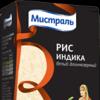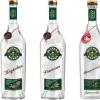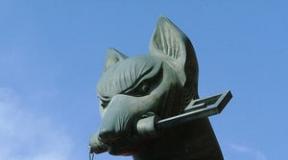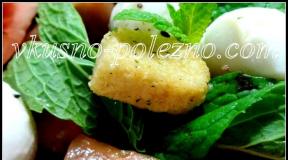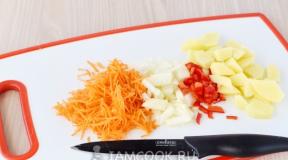Zao Wang Restaurant. Chain of restaurants "Zao Wang Zao Wang on Narvskaya
Shen Wei opens the first Chinese restaurant "Zao Wang" in 2003 in St. Petersburg near Narvskaya metro station on Perekopskaya street. This is a very beautiful cozy restaurant, with convenient parking, decorated in national Chinese style with quiet Chinese background music.
Here they will be happy to offer the guest dishes of real East Asian cuisine.
Zao Wang on Narvskaya
The restaurant consists of four halls, two of which are banquet halls, one is non-smoking and one large common hall with cozy booths where you can retire. At the entrance there is a small fountain with cute turtles that children like so much.
The small banquet hall can accommodate up to 15 people, the large banquet hall can accommodate up to 40 people. Both halls are equipped with a separate entrance, lavatory, musical equipment, TVs, karaoke.
"Zao Wang" on Metalworkers
The third Chinese restaurant "Zao Wang" is located on Metallistov Avenue in the building of the hotel "Polustrovo". This is a fairly modern restaurant, made in the style of a pub, consists of four spacious halls with high ceilings and large display windows. There is a lot of light and space, it is possible to invite guests to large banquets, all football matches are broadcast live, not only business lunches are offered, but also complex dinners, the restaurant has a large convenient parking lot.
The fourth restaurant on Leninsky was opened in 2013 on Leninsky Prospekt, 114.
11 lunar day, the most auspicious day of the summer period, it was chosen as the opening day of our 4th restaurant "Zao Wang".
The location was not chosen by chance either. Convenient interchange and convenient access guarantee our dear guests ease and comfort of travel.
The interior of the restaurant is made in a European laconic style, with decorative elements inherent in the Asian style. Massive statues of elephants made of mahogany, ceramic frames with symbols of prosperity, good luck and love fill the restaurant with a sense of sacred and divine grace. The color scheme of the restaurant suggests harmony and peace of mind. Chefs can only emphasize all this with fragrant and delicious dishes of East Asia.
In the menu you can meet long-loved Chinese dishes, get acquainted with exotic dishes of Thai and Korean cuisines, and enjoy signature rolls from our sushi chef. For the youngest guests there is a special menu. Business lunch and Wi Fi are provided for business and active people. There is also a smoking area and positions for small banquets and family evenings.
The restaurants employ only chefs from China who have undergone special training and are qualified.
Friendly and sociable staff will help you make the right choice among the many Chinese and Japanese dishes, a variety of wines, drinks and desserts.
Each of the restaurants is open from 12:00 and is open until 24:00, on weekdays from 12:00 to 16:00 complex lunches (business lunches) are offered. Excellent cuisine, pleasant atmosphere, quality service and low prices will pleasantly surprise you.
ZAO-WANG ZAO-WANG
(“prince of the hearth”), Zao-shen (“god of the hearth”), Zao-jun (“lord of the hearth”), Zao-pusa (“bodhisattva of the hearth”), Dongchu sy-min chzhu (“lord of the fate of the eastern ( corner) of the kitchen"), in Chinese mythology, a popular deity of the hearth. The very concept of "hearth" (in the modern pronunciation of zao) is written in a hieroglyph, which is a cave with a frog sitting in it. Although the semantics of the ancient ideas about the hearth remains unsolved, it can be assumed that initially the Chinese had a belief in the spirit of the hearth in the form of a frog, then in the form of a woman (during the period of maternal dominance), and in a later era - in a male form. Probably the cult of the C.-v. was formed on the basis of the disappeared ancient ideas in the 1st millennium AD. e. According to later legends^ Ts.-v. monitors everything that happens in the house and at the end of the year - on the 23rd or 24th of the 12th month according to the lunar calendar, goes to Yu-di(“jade sovereign”), to whom he reports on all the affairs that have occurred in his house. It was believed that C.-in. returns on the 1st of the New Year.
Judging by the anonymous composition of the 7th-9th centuries. "Nanxia suishi chi" ("Notes on the seasons in the capital"), the custom of appeasing C.-v. already existed at the time. Then they sprinkled the hearth with wine, which was called "to intoxicate the lord of life." This is a reference to the Master of Life (Si-ming) testifies to a very early contamination of the archaic image of Sy-min and Ts. . Over time, C.-in. began to be revered also as a god - the patron saint of cooks and waiters. Quite often C.-v. also called Nan-fang ho-dijun (“southern sovereign of fire”), it is possible that this nickname retains the idea of the god of the hearth as the god of fire.
In different eras, there were different versions of the origin of the C.-v. In the late medieval folklore in the Central-in. turned into a poor lazy Zhang, who lived at the expense of his wife. On New Year's Eve, his wife sent him to her parents for rice, and they, pitying their poor daughter, put silver in the bottom of the bag. The lazy man was tired of carrying a heavy burden, and he gave the bag to the oncoming beggar. The enraged wife beat him to death, but since it was New Year's Eve, she temporarily buried the corpse under the hearth. Regretting what she had done, she then hung a memorial tablet with the name of her husband over the hearth and began to pray in front of it. Since then, the custom of honoring Zhang as a Ts. spread, according to legend, throughout China. There are other versions of this story. In religious texts reflecting the beliefs of various sects, the origin of the C.-v. explained in this way: in response to the complaints of the spirits that it is difficult for them to keep track of the affairs of people. Supreme Jade Sovereign - Yu-di invited Saint Zhang Zhan from the mountain Kunlun and ordered him to become Ts.-v. Having received this command, Zhang transformed into 5 lords of the hearth, corresponding to 4 cardinal points and the center, they, in turn, turned into 10 thousand Ts. A precious scroll about the god of the hearth). In other works of the same genre, C.-v. acts as a good old man, saving people and instructing them on the path of virtue. The image of the C.-in. extremely popular in folk art, paper paintings depicting Ts.-v., his wife and assistants were printed from boards in large numbers. There were also paintings with a portrait of one Ts.-v., for some Chinese believed that if you hang a picture of a Ts. with his wife, there will be no harmony in the house.
Lit.: Alekseev V. M. Chinese folk painting, M., 1966, p. 155-56; Baranov I. G., Chinese New Year, Harbin, 1927;
Maspero H „Le Taoism et les religion chinoises. , p. 129-31; Situ Yun, Zao-pusa-dy gushi (The legend of the bodhisattva of the hearth), Minsu, 1928, No. 25-26. With. 34-36;
Yu-min, Zao-shen-dy goushi (The legend of Zao-shen). Minsu, 1928, 53-55, p. 128-31; Liang Sheng-hui, Zao-shen-dy yanjiu (Research on Zao-sheng), Dongfang zazhi, 1926, vol. 23, no. 24, p. 103-08; Hu Jia. Han-ren si zao kao (Research on sacrifices to the hearth in the Han era), "I Ching", 1937, No. 21, p. 4-7; Zhou Tso-ren, Guanyu song Zao (Regarding the wires of Zao-shen), "Xiangtu", vol. 2, no. 2; Yang Kun, Zao-shen kao (Research about Zao-sheng), Hanxue, 1944, No. 1, p. 107-67; Zhu Tse-fan, Gudai si zao sisu (Customs associated with sacrifices to the hearth in antiquity), Dongfang zazhi. 1969, vol. 2, no. 10; Zao-wangye-dy chuanshuo ernian (Two legends about the god of the hearth), with Minjian wenxue. 1957, No. 12, p. 42-49; Tsuda Soki-chi, Sina no minken shinko-ni okeru kagami (God of the hearth in Chinese folk beliefs), in his book: Sina hokyo-no kenkyu, Tokyo, 1957, p. 545-81;
Karino Naoshi, Shina no kagami-ni tsuite (Concerning the hearth god in China), in his book: Shinagaku bunsu, [b. m., b. G.]; Ikeda Suekazu, Shina-ni okeru kagami no kigen (The origin of the image of the hearth god in China), Shukyo kenkyu, no. 134; Inahata Koichiro, Shimei-gami zo-no tenkai (Development of the image of the god of life), "Chugoku bungaku ken-vu", 1979, № 5,
With. 1-17.
B. L. Riftin.
(Source: "Myths of the peoples of the world".)
At the bottom of the picture juybaopen (“a vase that collects treasures”, the Chinese version of the cornucopia), to the left of it Li-shih xian-guan, to the right Zhao-tsai tong-tzu are the usual companions of the god of wealth Tsai-shen.
Along the edges of the picture on the left and right are the images of the Eight Immortals.
Chinese popular painting.
Early 20th century
Leningrad.
Museum of the History of Religion and Atheism.
Collection of Academician V. M. Alekseev.
See what "ZAO-WAN" is in other dictionaries:
ZAO WANG, in Chinese mythology, the god of the home. Shown with his wife... encyclopedic Dictionary
In Chinese mythology, the god is the keeper of the hearth. Shown with his wife... Big Encyclopedic Dictionary
Zao-wang- Zao shen, Zao jun, Za pusa, Dongchu siming zhu in whale. myth. popular deity domash. hearth ...
- (lit. "underground court"), in late Chinese mythology, hell. Ideas about D. developed under the influence of Buddhism, which penetrated China at the beginning of our era. According to later ideas about the six forms of rebirth that are assigned in D. ... ... Encyclopedia of mythology
The totality of mythological systems: ancient Chinese, Taoist, Buddhist and late folk mythology. Ancient Chinese mythology is reconstructed on the basis of fragments of ancient historical and philosophical writings (“Shujing”, the most ancient parts of the 14th-11th centuries to … Encyclopedia of mythology
Chinese mythology- a collection of myths. systems: al. chinese, taoist, buddh. and late Nar. mythologies. Dr. whale. myth. reconstructed from fragments of ancient ist. and philosophical essays. ("Shujing", the oldest parts of the 14th-11th centuries BC; "I Ching", the oldest parts of the 8th ... ... Ancient world. encyclopedic Dictionary
Hotel Polustrovo- (St. Petersburg, Russia) Hotel category: 3 star hotel Address: Prospect metallists … Hotel catalog
Contents: Geography. General history. History of K.'s relations with Europe. Language and Literature. Chinese music. The great empire of eastern and central Asia is known among its inhabitants under names that have nothing to do with European ones (China, China, ... ... Encyclopedic Dictionary F.A. Brockhaus and I.A. Efron
Qianziwen millennium. A thousand words is a classic Chinese mnemonic text used to memorize characters. The authorship is attributed to the calligrapher Wang Xizhi. Qianziwen ... Wikipedia
 Founder and owner of a chain of restaurants " Zao Wang» Chinese citizen Shen Wei, once worked in Beijing as an ordinary chef in a Chinese restaurant. It took him a lot of time to master all the subtleties of cooking complex dishes and various sauces that you can now try in our restaurants.
Founder and owner of a chain of restaurants " Zao Wang» Chinese citizen Shen Wei, once worked in Beijing as an ordinary chef in a Chinese restaurant. It took him a lot of time to master all the subtleties of cooking complex dishes and various sauces that you can now try in our restaurants.
Based on his work experience, Shen Wei knows well that the taste of dishes directly depends on the quality of the products, which is why he personally makes purchases of products every day, selecting only the highest quality products. Shen Wei opened the first Chinese restaurant "Zao Wang" in 2003 in St. Petersburg near Narvskaya metro station on Perekopskaya street. This is a very beautiful cozy restaurant, with convenient parking, decorated in national Chinese style with quiet Chinese background music. Here they will be happy to offer the guest dishes of real East Asian cuisine. The restaurant consists of four halls, two of which are banquet halls, one is non-smoking and one large common hall with cozy booths where you can retire. At the entrance there is a small fountain with cute turtles that children like so much. The small banquet hall can accommodate up to 15 people, the large banquet hall can accommodate up to 40 people. Both halls are equipped with a separate entrance, lavatory, musical equipment, TVs, karaoke.
Shen Wei opens his second Chinese restaurant "Zao Wang" in 2009 on Konnoy Street near the square. Uprising. By this time, Sheng and his wife Yuan Xiaojuan had already had their first son, Shen Qiu. Throughout his family life, Yuan always supports his spouse in everything, and this is probably why there is a warm homely atmosphere in all his restaurants. The interior of the restaurant on Konnaya Street resembles a beautiful golden box. The walls inside the restaurant seem to be embroidered with gold threads. Three small halls smoothly flow from one to another. Here you can indulge yourself with traditional Chinese dishes, as well as take away dishes in a box of rice and homemade noodles, cooked on a strong, open fire "wok" according to ancient Chinese recipes.
The opening of the third restaurant in 2011 coincides with the birth of Shen Sheng's second son, who was born in St. Petersburg. The third Chinese restaurant "Zao Wang" is located on Metallistov Avenue in the building of the hotel "Polustrovo". This is a fairly modern restaurant, made in the style of a pub, consists of four spacious halls with high ceilings and large display windows. There is a lot of light and space, it is possible to invite guests to large banquets, all football matches are broadcast live, not only business lunches are offered, but also complex dinners, the restaurant has a large convenient parking lot.
Our restaurants employ only chefs from China who have undergone special training and are qualified. We have a huge selection of cold and hot dishes for every taste. Friendly and sociable staff will help you make the right choice among the many Chinese and Japanese dishes, a variety of wines, drinks and desserts. Each of our restaurants is open from 12:00 and is open until 24:00, on weekdays from 12:00 to 16:00 complex lunches (business lunches) are offered. Excellent cuisine, pleasant atmosphere, quality service and low prices will pleasantly surprise you. Come! We are waiting for you!
Chinese restaurant "Zao Wang" on Metallistov
Metallistov Ave., 115, lit. A
Chinese restaurant "Zao Wang" on Konnaya
St. Konnaya, 5/3, lit. A (entrance from Telezhny Lane)
Chinese restaurant "Zao Wang" on Narvskaya
st. Perekopskaya, 5, lit. A
October visit to the next Asian restaurant turned out to be
a very interesting experience for me.
In order to identify quality in an objective personal opinion, I am compiling this review.
The review will be about a Chinese restaurant - Zao Wang. The name itself is
a kind of network of establishments throughout St. Petersburg. However, the focus will be on the restaurant at:
St. Petersburg, st. Perekopskaya 5 (Nearest metro station - Narvskaya)
So, not far from the metro under a rather interesting sign and a stylized arch
The doors to the Chinese restaurant are open to us. I would like to note the steep rise
Up the stairs, he is descending on the basis of the visit. There is a chance to stumble and fly down like a bird.
At the time of my visit, the time was already late in the evening, the occupancy of the main hall
Visually it was about 30%. Do people like it? Perhaps this is a good indicator?
In reality, things are often ambiguous.
This address attracted me with its interior from a photo on the network, however, as it turned out
- the photos turned out to be corny old, but in fact a visual discrepancy.
In general, it is not critical, since the main subtleties of the design were left and finalized.
Many elements of oriental decorations and decorations fit perfectly into the visualization of the premises.
The restaurant itself consists of three separate halls: a large central one and a small one for privacy.
VIP zone for exceptional guests. There is also a semblance of a closed tent with two tables.
The central hall is comfortable in terms of placement, there is enough space, it feels cozy.
The design is stylish, there is an orientation to the European standard.
Warm wood tones, soft harmonious furniture. Various lighting elements
Some are installed as scenery, some set a sufficient light tone.
However, if there is natural light at the window, then in the center of the hall it feels like
It was too dark. Based on this, attention was not focused on the table at all,
consequently on the served dishes. It was difficult to fully see what I was eating at this
poor lighting, not something to photograph.
In the hall, which is smaller, the lighting conditions were somewhat better.
The interior atmosphere is somewhat different, but I would call it less comfortable,
Darker and tighter.
VIP hall on account of this will be better in terms of sensations. For a big company here
A special banquet table with convenience and a functional drum is placed.
All halls are clean, fresh, ergonomic, thought out to the smallest detail.
Air conditioners and TVs are installed, the music is broadcast pleasant
Chinese modern and European. The situation is generally positive
And supportive of the desire to sit at a table and order a meal.
By the way, I will rightfully describe the toilet room here as one of the most
Best. Spacious, clean, fresh, well thought out. Everything is there, everything works.
No complaints. Three toilet stalls, even a urinal. Two washbasins, hand dryer,
Large mirror in the hallway.
According to the observation, the service in the restaurant is not cold, but not particularly professional.
The waiters are friendly, in support of the service leads and takes part
Institution administrator. At the time of my visit, the manager kindly supported
My initiative and told some facts about the restaurant. Many questions were
Discussed, some wishes and comments I think were taken into account for the benefit.
The menu of the restaurant, by definition, I would classify as middle class. Not a lot and not a little.
There is a wine list, a drink card and special offers.
The tea card is located at the end of the main menu, which, in my opinion, is not a very tactful decision.
There is a choice, everything for people in Russian and Chinese.
There are pictures, there is a description, it looks delicious.
A special menu with author's cuisine is available upon pre-order.
Many dishes are not included in the main list of dishes in the regular menu.
It didn't take me long to get familiar with the main menu.
According to the description, I would not attribute the choice to the assortment to something exotic.
On the contrary, everything is quite simple. Recipe of dishes, regardless of the choice of meat
The same type, the cuisine positions itself as Sichuan (sweet).
There was practically no intrigue for me personally;
the names of the proposed culinary masterpieces.
The tea menu has many typos in the text, which distorts the information as a whole.
I am inclined to guess that the situation is the same in the rest of the Russian-language description of dishes.
What did you order?
When ordering, a nuance was taken into account in terms of serving dishes as they were ready on both sides.
1) LOTUS Tea (Fragrant green tea, described as beneficial for health)
Previously, I drank a tea called lotus in the form of bags from Grindfield, the aroma of which I
Reminds me of tea leaves from fresh blackcurrant leaves in the village.
From a real lotus, I expected something more, however, in addition to a beautiful opening
There were no more petals in the boiling water. No taste, no aroma.
2) Seafood soup (a small bowl with the usual clear broth of seaweed, seaweed, a couple of mussels.
No taste, no originality, no satiety portions) Are you serious?! For 270 R?
3) Shrimp chips (Huge rice chips, won't fit in your mouth, stupid big portion.
It tastes like cheap Russian potato chips, only colored. How does the snack come in
With difficulty, as a separate dish, nothing at all. Served on a dish piled with a mountain. Why such a number is determined is not clear. By observation, everyone who takes them to order either leaves 80% on the table, or takes them with them. Actually, there was no desire to take it with me.)
4) Tree mushroom salad (More or less crunchy mushrooms, apparently in oil, with pieces of garlic, carrots and parsley thrown over for the sake of appearance) The taste is very weak, there is no combination.
5) Beef with cumin (Hunan Province)
Appears according to the recipe as beef tenderloin, cumin, hot pepper, onion, soy sauce.
What's up? Busting with fragrant spices, interrupts the spiciness, the onion does not cause a harmonious combination of taste, and the presence of the sauce is not felt. Visually not appetizing, poor. The serving is nondescript, there is only meat in the portion, which means that it is necessary to order rice or a vegetable side dish separately for the dish.
The taste of cooked beef was terrible, not tasty, but simply no.
No emotion. When I myself personally prepared marinade for kebabs during
days from the same beef, with the same cumin, given that he made meat by eye and for the first time,
and it turned out many times tastier as a result of cooking at the stake.
Oh yes, for the beef, of course, I ordered a bowl of rice.
(only the rice turned out to be really tasty and cooked perfectly)
I'm shocked. There is no smell of Chinese cuisine here,
Although they cook like the Chinese, by definition.
I give 2 points for a cup of rice, Carl!
With a 20% discount, the check cost me 804 R.
I left a tip to the waitress out of courtesy and for her beautiful eyes.








